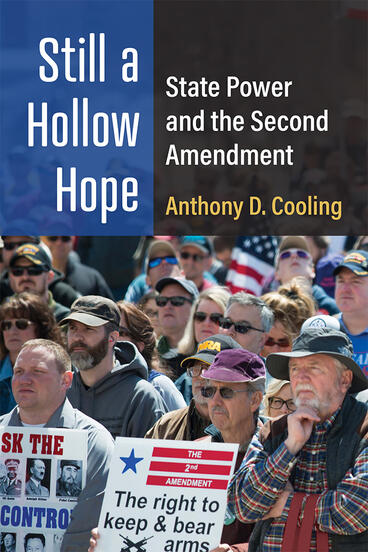Still a Hollow Hope
State Power and the Second Amendment
Federalism still matters
Description
The U.S. Supreme Court increasingly matters in American political life when those across the political spectrum look at the Court for relief from policies they oppose and as another venue for advancing their own policy agendas. However, the evidence is mounting, to include this book in a big way, that courts are more of a sideshow to the culture war. While court decisions, especially Supreme Court decisions, do have importance, the decisions emanating from the Court reflect social, cultural, and political change that occurred long prior to their decision ever being made.
This book tests how much political and social change has been made primarily through Gerald Rosenberg’s framework from his seminal work, The Hollow Hope: Can Courts Bring About Social Change, but it also utilizes Daniel Elazar’s Political Culture Theory to explain state level variations in political and social change. The findings indicate that while courts are not powerless institutions, reformers will not have success unless supported by the public and the elected branches, and most specifically, that preexisting state culture is a determining factor in the amount of change courts make. In short, federalism still matters.
Anthony D. Cooling is a Budget and Revenue Officer.
Reviews
“Building on Rosenberg’s Hollow Hope and Elazar’s measures of political culture, Cooling explores the effect of the Supreme Court’s Heller and McDonald decisions on the level of gun ownership. Combining nationwide quantitative data with three qualitative state studies, Cooling presents a nuanced, detailed, and comprehensive examination of how states responded to the Court. The provocative and counterintuitive findings may surprise the reader.”
- Gerald N. Rosenberg
—Gerald N. Rosenberg, author of The Hollow Hope (3rd Edition forthcoming Spring 2023)
“This book is a careful and convincing application, elaboration, and extension of Gerald Rosenberg’s original theory of the limited capacity of the Supreme Court to effect significant change. Here too, the author finds that the Court does little more than reflect with shifting political cultures. It is a must read for anyone interested in political change and the Supreme Court. A stunning achievement.”
- Malcolm Feeley
—Malcolm Feeley, Jurisprudence and Social Policy Program, School of Law, UC Berkeley

